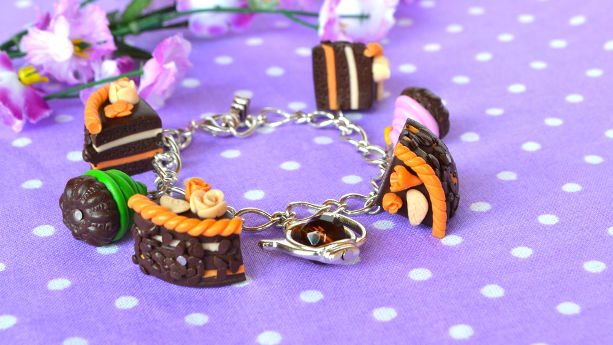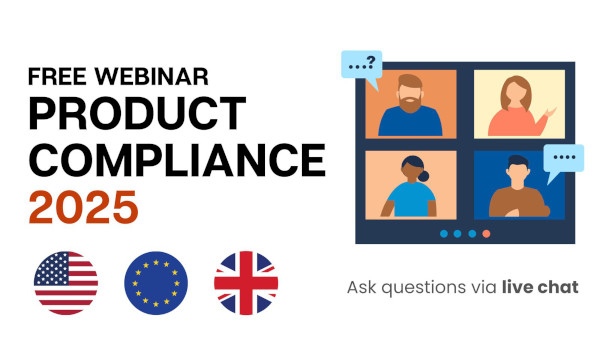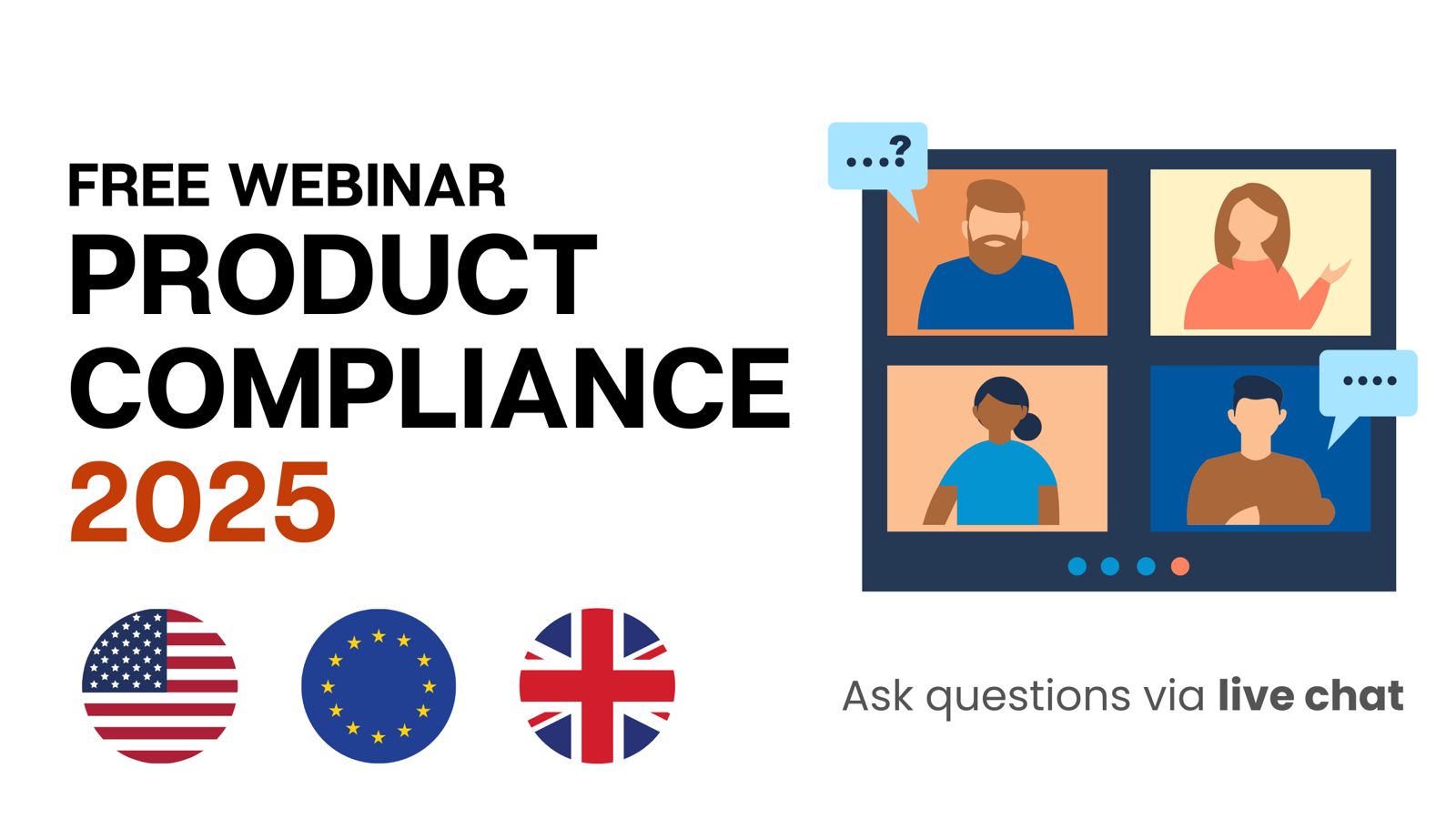
Children’s jewelry sold in the United States are subject to safety standards, substance restrictions, labelling, certification, and testing requirements. In this guide, we take a closer look at CPSIA, ASTM F2923, California Proposition 65, and other compliance requirements applicable to children’s jewelry.
Content Overview

FREE CONSULTATION CALL (US, EU & UK)
- Request a free 30-minute call with Ivan Malloci to learn how we can help you with:
- Find product requirements
- Certification and labeling
- Lab testing
CPSIA
The CPSIA sets regulatory requirements for a wide range of products meant for children aged 12 and under, including children’s jewelry. Here are the main requirements:
- Compliance with relevant standards and substance restrictions
- Children’s Product Certificate
- Tracking label
The CPSC guidance page on children’s products explains that children’s jewelry is generally marketed, sized, and themed for children. Sometimes, factors such as how much the product costs, whether it has play value, and what it looks like may contribute to the product being considered for children. This applies also in the case of products that are not marketed for children.
Also, according to the CPSC, toy jewelry is subject to toy safety standards, as well as general children’s product requirements.
ASTM F2923 – Standard Specification for Consumer Product Safety for Children’s Jewelry
According to the CPSC FAQ on jewelry, ASTM F2923 is not incorporated by reference. However, the CPSC explains that this is an industry consensus standard, and it is considered to provide the best practices. Thus, from a practical standpoint, you should comply with its requirements to ensure product safety.
ASTM F2923 specifically sets requirements, and test methods for certain substances and mechanical hazards in jewelry intended for children aged 12 and younger.
Substance restrictions
Children’s jewelry should adhere to total lead content and lead in paint and similar surface coatings requirements. Specifically, it should not contain more than:
- 0.01% of total lead content, and
- 0.009% of lead by weight in paint or surface coatings
Additional substance restrictions may apply to children’s jewelry, such as those set by ASTM F2923.
Small parts
16 CFR Part 1500 sets small part warning and labeling requirements for products that contain small parts and are meant for children aged 3-6. The caution statement should contain a warning symbol and should read:
WARNING:
CHOKING HAZARD–Small parts
Not for children under 3 yrs.
16 CFR Part 1501 sets methods for identifying products that are intended for children aged below 3 years and can cause aspiration, choking, or ingestion hazards because of small parts. Those types of products presenting said risks are considered “banned hazardous substances”.
Both 16 CFR Parts 1500 and 1501 are relevant to children’s jewelry because such products may contain small parts that may be ingested by children, causing choking hazards.
Children’s Product Certificate (CPC)
Importers and manufacturers of children’s products (including children’s jewelry) should issue a Children’s Product Certificate (CPC) based on test reports issued by CPSC-accepted labs. This is to certify that their products comply with the relevant children’s product safety regulatory requirements.
Tracking label
The CPSIA requires children’s products and their packaging to bear permanent tracking labels that provide identifying information.
The tracking label should contain:
- Name of importer or manufacturer
- Date and location of manufacture
- Batch number
- Other relevant information
19 CFR Part 134 – Country of Origin Marking
Consumer products manufactured or sold in the United States, including children’s jewelry, should generally clearly indicate the country of origin marking on the product or its packaging (if it is not possible to mark the product, due to its nature).
According to 19 CFR Part 134.43, Native American-style jewelry products are subject to specific marking requirements. For instance, such products should permanently include the country of origin via cutting, die-sinking, engraving, or stamping:
- On the clasp or other obvious location
- On an attached plastic or metal tag
US State Regulations for Children’s Jewelry
Several US state regulations ban the manufacture, shipping, sale, distribution, or even promotion of children’s jewelry that contains more than certain amounts of heavy metals, such as lead and cadmium. Here, we list examples of state regulations and explain their jewelry substance restrictions.
California – Metal-Containing Jewelry Law
California’s Metal-Containing Jewelry Law sets rules and substance restrictions for jewelry in general, including children’s jewelry.
Here, we list its specific restrictions for lead and cadmium in children’s jewelry:
- 0.01% lead by weight in each jewelry component
- 0.009% lead by weight in its surface coatings
- 0.03% cadmium by weight in its components
- 0.0075% soluble cadmium by weight in its surface coatings
Connecticut – Children’s jewelry containing cadmium law
Connecticut’s Children’s Jewelry Containing Cadmium Law applies to children’s jewelry such as:
- Charms
- Bracelets
- Pendants
- Necklaces
- Earrings
- Rings
The law restricts cadmium in children’s jewelry to 0.0075% by weight.
Maryland – Cadmium in Children’s Jewelry law
Maryland’s Cadmium in Children’s Jewelry Law restricts cadmium in children’s jewelry to 0.0075% by weight.
Illinois – Cadmium-Safe Kids Act
Illinois’ Cadmium-Safe Kids Act applies to jewelry, such as:
- Ankle bracelets
- Arm cuffs
- Brooch
- Hair accessory
The Act restricts cadmium in paint or surface coating of children’s jewelry to 75 ppm.
This restriction is based on the requirements set in the ASTM F963 standard.
New York – Lead-Containing Jewelry law
New York’s Lead-Containing Jewelry Law applies to jewelry, such as:
- Brooch
- Crown
- Necklace
- Ring
The Law restricts the total lead content in component parts of children’s jewelry to 0.004%.
It also requires children’s jewelry to bear the following warning statement on the product or the label on its packaging:
“WARNING: CONTAINS LEAD. MAY BE HARMFUL IF EATEN OR CHEWED.”
Note, however, that this warning requirement does not apply if:
- Federal law takes precedence over state law
- Lead-containing component parts in children’s jewelry are inaccessible
- Component parts are exempt from US CPSC-mandated testing
Lab testing
You should have your children’s jewelry products tested to make sure they are safe to wear, and do not present mechanical or chemical hazards. Some regulations explicitly require product testing, while some may not mention testing. Regardless, you still need to have your product tested as a practical necessity to ensure product safety.
When your product passes lab testing, you receive a test report containing proof that your product complies with the applicable regulations, requirements, and standards.
| Regulation | Lab testing |
| CPSIA | Children’s products should undergo third-party testing by a CPSC-accepted lab. Children’s jewelry, for instance, should:
|
| US State Regulations | Several state regulations restrict the use of certain substances in children’s jewelry products.
As such, you should have your children’s jewelry products tested to ensure they do not, for instance, contain:
|
Children’s jewelry testing companies
Here are several companies that claim they can test children’s jewelry against US regulations:
- Intertek
- SGS
- ACT Lab LLC
- Bureau Veritas
Additional requirements
Children’s jewelry is also subjected to additional regulations such as California Proposition 65 and the TSCA, which set substance restrictions.
| Regulation | Description |
| California Proposition 65 | California Proposition 65 regulates and restricts substances that may be present in children’s jewelry, for instance:
You should provide a warning with your children’s jewelry product if you are not sure that the product does not contain restricted substances above the limits. Note that the only way to ensure compliance is usually to perform the necessary tests. |
| Toxic Substances Control Act | The Toxic Substances Control Act restricts the usage of some substances that may exist in products (e.g. children’s jewelry), such as PBT, which can be found in plastics. Thus, it is important to test your product against relevant restricted substances. |
Recommended articles

















Children’s jewelry that is manufactured, sold, or offered for sale and transported within California shall not have more than 0.03% (300 ppm) cadmium by weight. There are no mandatory federal requirements specifically for jewelry; however, there are voluntary standards for children’s and adult jewelry that represent .